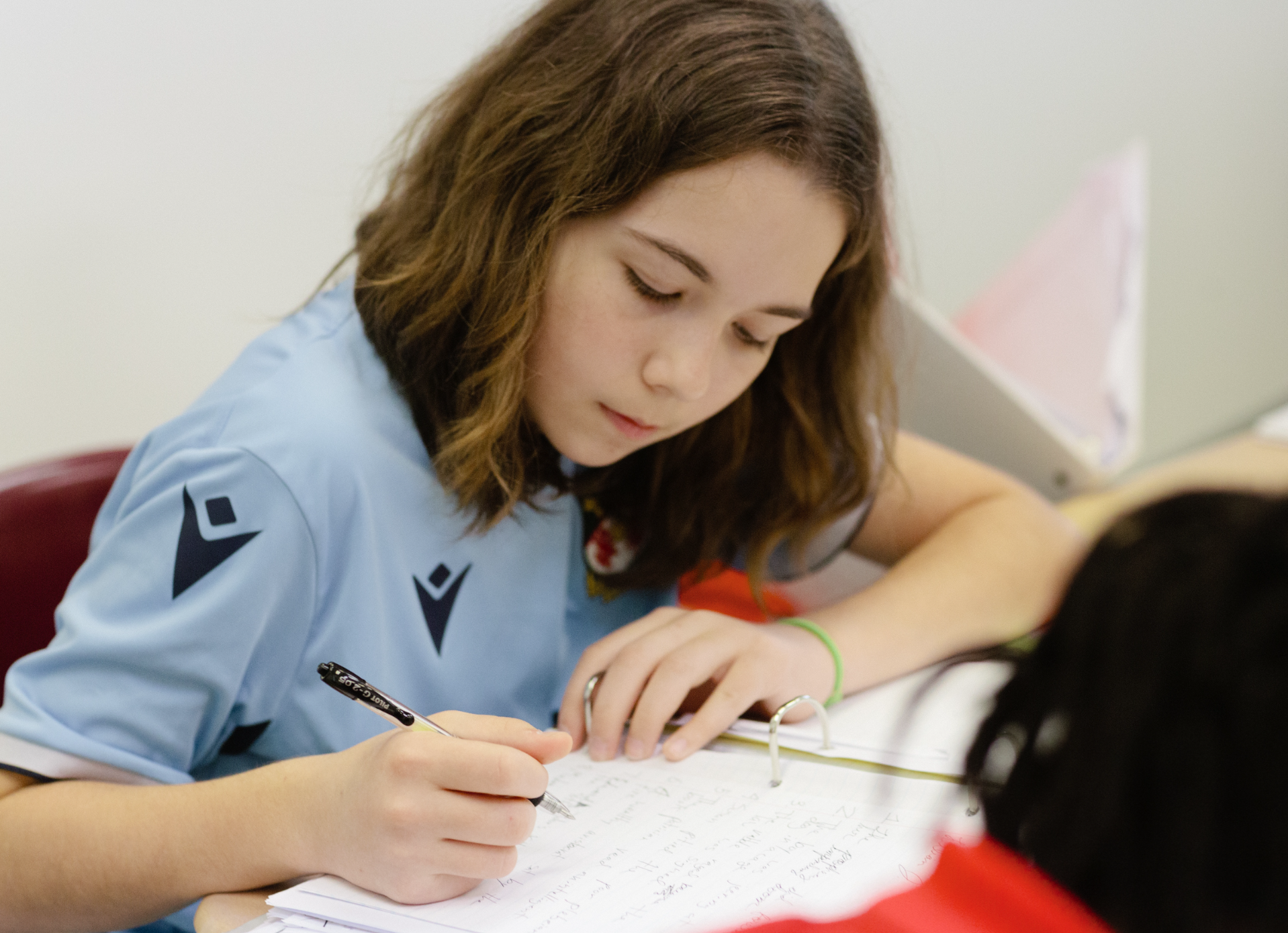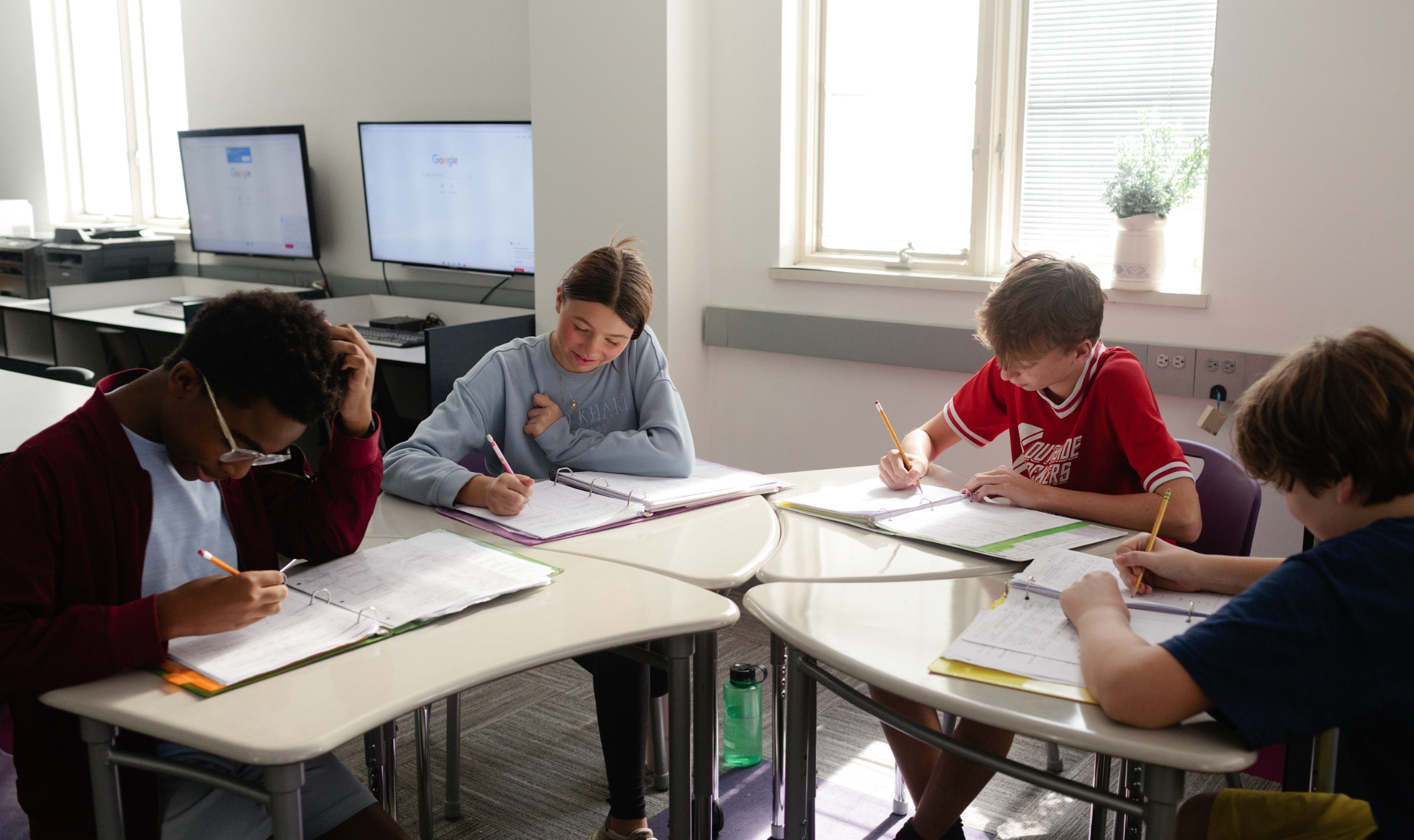On Developing Writers
Reflections from Lyn Garrett
Writing is one of the most transformative skills your child will learn at school. Ms. Garrett is passionate about teaching writing to her 3rd graders because it unlocks so many abilities in children, from improving vocabulary and grammar to sharpening their critical thinking skills. Writing encourages students to think outside the box, express their thoughts, and develop their voices.
A cornerstone of Ms. Garrett’s approach is recognizing the strong relationship between reading and writing. The two reinforce one another—reading inspires ideas for writing, and writing enhances understanding of the written word. By combining both practices, students become more confident communicators.
Ms. Garrett also loves helping students overcome common challenges with writing. Moving beyond basic formulas, breaking through writer’s block, and learning to embrace creativity are essential steps in the process. One of her favorite strategies is daily writing. Whether journaling about their experiences or imagining exciting stories, in her class, students have the opportunity to practice writing every day.
“Students get into their writing when they get to design something. That’s where you see them really engaged.”
Throughout the year, students will explore many genres, including biographies, personal narratives, fairy tales, poetry, and more. One standout project is designing a food truck and creating a complete business plan to bring it to life. This creative assignment blends imagination with practical skills, making writing both fun and purposeful.
To celebrate and reflect on their progress, students compile their best work into a writing portfolio at the end of the year. Watching students beam with pride as they see how much their writing has grown is one of Ms. Garrett’s favorite moments. Teaching writing is a long and thoughtful process, but the results are truly beautiful.
Reflections from Wanda Williams
By the 6th grade, many students approach writing with hesitation, fearful of "getting it wrong." They’ve developed rigid ideas about what good writing looks like, and breaking through these notions is hard but rewarding work.
Mrs. Williams believes that writing should feel approachable, and she provides students with the tools they need to succeed. One way she helps students overcome their fear of starting is by teaching new writing templates. These structured frameworks give students a clear starting point, helping them build confidence while fostering creativity.
Interestingly, Mrs. Williams firmly believes that the key to becoming a great writer is to develop a deep love for reading. Reading broadly exposes students to different voices, styles, and ideas. Adults can model this by sharing their own reading habits, showing how we all read in the real world.
“Adults need to model that reading isn’t just relegated to the classroom.”
To explicitly connect reading to writing, Mrs. Williams has her students write “letter essays.” These unique assignments teach students to address their writing to a specific audience, helping them see writing as a conversation. Students are also encouraged to think critically about why their ideas matter. By asking, "Why is this important?" Mrs. Williams guides them toward higher-order thinking, making their writing more purposeful and impactful.
Another key element of her teaching is using textual evidence in writing. Whether they’re crafting arguments or analyzing literature, students learn to back up their ideas with evidence. This skill not only strengthens their writing but also helps them engage in meaningful, rational discussions—an essential life skill. The writing process is more important than the final product. Mrs. Williams takes great joy in seeing where students begin and how far they’ve come.




